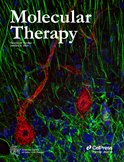January 2024
Editorial Team
Jon Brudvig, PhD – Editor, The Vector
Jessica Schneller, PhD – Associate Editor, The Vector
Wan Du, MD, PhD – Junior Editor, The Vector
Inside This Issue
Leadership Message
Breaking Through
From Molecular Therapy
Society News
Career Center
Public Policy
Industry News
Leadership Message
Two More Weeks to Send #ASGCT24 Abstracts!

Hello ASGCT Members,
I hope you’re looking forward to an exciting year ahead! All of us at ASGCT are working hard to plan and execute top-notch programming in 2024 and beyond, and I can’t wait to share it with all of you.
To make sure you’re among the first to hear about new initiatives and opportunities this year, please take a moment and renew your membership. Keeping your membership current means you will maintain exclusive benefits like registration discounts for events including the Annual Meeting and Professional Development Cafés, access to on-demand material, ability to nominate for awards and serve on committees, and much more that you can learn about here. You can even “set it and forget it” with the auto-renew option and we’ll automatically renew your membership going forward. Being an ASGCT member is the best way to get (and stay) involved with the Society year-round, so start the year off right and renew today.
With that said, registration for the 27th Annual Meeting is open and we are accepting abstracts for two more weeks! Send us your research through Friday, Jan. 26, for the opportunity to present your work in front of the largest gathering of CGT professionals during the meeting. You may also win an award for high-scoring research, be published in Molecular Therapy, and, if you’re an associate member and a first and presenting abstract author, you qualify for FREE registration. Submit today; we can’t wait to see what you’ve been working on.
Sincerely,
Jeffrey S. Chamberlain, PhD
ASGCT President
Breaking Through
Evolving membrane-associated accessory protein variants for improved adeno-associated virus production
Schieferecke AJ, Lee H, Chen A, Kilaru V, Williams JK, and Schaffer DV
DOI: https://doi.org/10.1016/j.ymthe.2023.12.015
Summary by Wan Du, MD, PhD
With the rising number of clinical-stage AAV products, the challenge of manufacturing substantial quantities of Good Manufacturing Practice (GMP)-grade AAV, essential for addressing both current and future clinical dosing requirements, becomes increasingly significant in the burgeoning gene therapy field. The membrane-associated accessory protein (MAAP), encoded by an alternative open reading frame (ORF) within the AAV cap gene, presents in all currently reported natural serotypes. The identification and analysis of MAAP shed light on AAV genomic mutations that can have either detrimental or advantageous impacts on the quality and yield of the vector.
In a recent Molecular Therapy article, authors describe a directed evolution approach to produce MAAP variants that provide enhanced quality and quantity of AAV vectors. Initially reported in 2019, MAAP triggers translation at a CTG codon within the +1 ORF in relation to the VP1 ORF. It binds to the plasma membrane and enhances the packaging efficiency of AAV2 through competitive exclusion, as demonstrated by wild-type (WT) AAV2 outperforming MAAP-null AAV2 in co-infection assays. In recent findings, there has been emerging evidence substantiating the functional involvement of MAAP in AAV secretion. Additionally, studies have demonstrated that truncations at the C-terminal of MAAP result in a modest enhancement in AAV2 or AAV8 vector genome production.
Inactivation of MAAP resulted in a reduction of both extracellular vesicle (EV)-associated and secreted AAV2 vector titers. To test the directed evolution approach, authors created an error-prone PCR library comprising various 1´106 MAAP variants. These variants underwent five rounds of iterative packaging into an AAV2 capsid, utilizing a cap gene in which MAAP expression was deactivated. Across successive packaging rounds, they observed a gradual increase in both overall titer and the ratio of secreted vector genomes within the bulk-selected MAAP library population.
Next-generation sequencing revealed an enhanced array of mutational features. Subsequently, a specifically chosen MAAP variant, characterized by missense mutations and a frameshifted C-terminal domain, demonstrated an augmented ability to package the GFP transgene in AAV2, AAV6, and AAV9 capsids. Findings in this work not only contribute novel insights into AAV biology but also outline a broadly applicable directed evolution strategy for the engineering of non-structural AAV genes. Furthermore, it identifies novel MAAP variants with the potential to enhance upstream recombinant AAV manufacturing.
From Molecular Therapy
Read the position description here and submit your CV and cover letter by Jan. 31, 2024.
NEW: Please welcome Mohamed Abou-el-Enein, MD, PhD, MSPH, new editor-in-chief of MTMCD!
Listen to episode 2 of the Molecular Therapy Podcast! Dr. Richard Vile discusses a recent article published in Molecular Therapy Oncology by himself and colleagues titled, "Trap and ambush therapy using sequential primary and tumor escape-selective oncolytic viruses."
 Active Calls for Papers
Active Calls for Papers
Biomanufacturing in gene and cell therapy (deadline: Jan. 15, 2024)
RNA and epigenetic editing: A new generation of precision therapeutics
Novel therapeutic targets and biomarker development
Latest MT issues: Check out the most recent issues of these Molecular Therapy family journals:
Society News
Volunteer through Jan. 17 to Serve on a Committee
If you've ever wanted to help develop Annual Meeting symposia, hone your leadership skills, or meet more of your fellow ASGCT members, volunteer for an ASGCT committee through Jan. 17! Check out our list of standing and scientific committees and fill out this form.
Nominate a Colleague for an Annual Meeting Award
Want to recognize a colleague for outstanding contributions to the field? Nominate them for an Annual Meeting award through Jan. 31! Nominations for 10 prestigious awards are now open; learn more about them and send us your nomination to honor your colleague at the 27th Annual Meeting in May.
Feb. 16: Free Café on AI in Gene and Cell Manufacturing
Join speaker Claire Aldridge, PhD (Form Bio), and moderator Li Ou, PhD (Avirmax, Inc.), for our February Professional Development Café! Dr. Aldridge will discuss how today's powerful computational tools can provide key insights into manufacturing to improve the efficacy and safety of these therapies. Register here.
Career Center
Are you looking for a job in the field of gene and cell therapy? Check out the new ASGCT Career Center for great opportunities with industry, government, and academic organizations. Sign up to receive alerts for open jobs in your area.
_2.png)
Public Policy
Last Chance to Apply for Congressional Policy Fellowship
The deadline is almost here – apply for ASGCT’s Congressional Policy Fellowship by January 15. In partnership with AAAS, one applicant will be selected for a one-year policy fellowship in a legislative office on Capitol Hill beginning this fall. Fellows will provide high-quality, science-based, independent guidance to federal policy makers and elevate awareness of the Society and the field. Previous fellows describe how this opportunity helped shape their careers and created a lifelong network of contacts and mentors. Fellows must be an ASGCT member with a doctoral degree looking to learn more about the intersection of science and policy. Check out the summary of application materials and FAQ and apply!
CMC Commitee Releases Commentary on Best Practices
ASGCT is excited to announce the release of a new commentary from members of ASGCT’s Chemistry, Manufacturing, and Controls (CMC) Committee. This publication stems from the comprehensive CMC-focused sessions conducted at the 2023 Annual Meeting. Authored by industry experts and thought leaders, the publication delves into key learnings and best practices for effectively engaging with FDA during the development of CGTs.
In the dynamic field of regenerative medicine, CMC plays a pivotal role in ensuring the quality, safety, and efficacy of therapeutic products. This publication explores the critical importance of CMC considerations throughout the development lifecycle, emphasizing their impact on regulatory interactions and successful product approvals. We extend our sincere gratitude to the authors for their contributions and commend the speakers at the Annual Meeting sessions whose insights informed this valuable resource.
Appropriations Are in Limbo for FDA, NIH
Funding for critical agencies like the Food and Drug Administration (FDA) and the Department of Health and Human Services (HHS), which provides funding for the National Institutes of Health (NIH), hangs in the balance as Congress works to pass appropriations bills for the 2024 fiscal year.
Legislators are facing tight deadlines and must reconcile their various proposed funding bills. A partial government shutdown may occur if these appropriations bills are not passed by the first funding deadline later this month. FDA’s current funding is set to expire on January 19, leaving researchers and scientists in a state of uncertainty. That said, with so much of FDA’s funding supported by user fees, product review activity should not be impacted, at least in the short term. Eight of the twelve appropriation bills will be due at a second, later deadline of February 2, including funding for NIH. Essential programs at both FDA and NIH would continue in the event of a shutdown, including public health emergency response, ongoing clinical and patient care, and product safety programs.
A government shutdown amidst these negotiations would be a detriment to researchers and scientists across various fields, and limit operations at both FDA and NIH. Clinical trial enrollment could be disrupted, grant funding delayed, and essential public health services could be hampered. The potential consequences for scientific progress and patient well-being are wide ranging, underlining the urgency of Congress to reach a bipartisan agreement and avert a funding cliff.
The best-case scenario is for Congress to negotiate and reconcile all 12 appropriation bills (individually, or through a mini/omnibus package) ahead of their respective funding deadlines. We do not expect this to occur, given the current late date. To avoid a government shutdown, Congress may pass another short-term CR, though this is not without its own challenges given recent sentiments in the House of Representatives. A second option would be passing a full-year, or date change, CR. This would allow agencies to continue to operate at the fiscal year 2023 funding levels through September 30. Again, here too is a potentially challenging and uncertain prospect. A CR in place past April 30 will trigger automatic spending cuts in the form of sequestration, which could have a large impact on overall funding levels. ASGCT will continue to watch the appropriations process and engage to ensure robust federal funding for CGT research and development programs.
Industry News
View the Rate Sheet